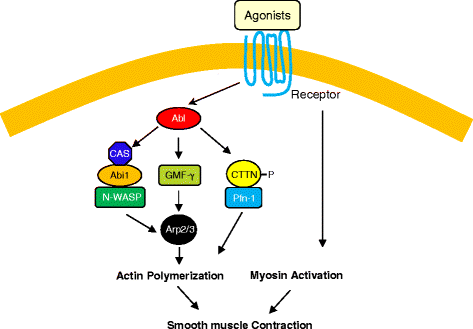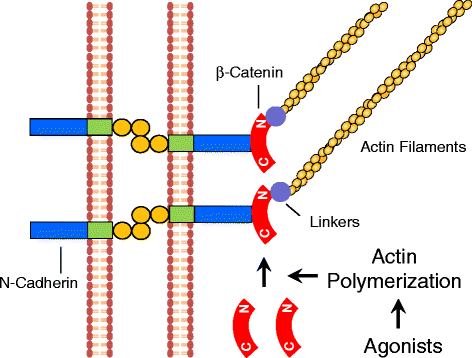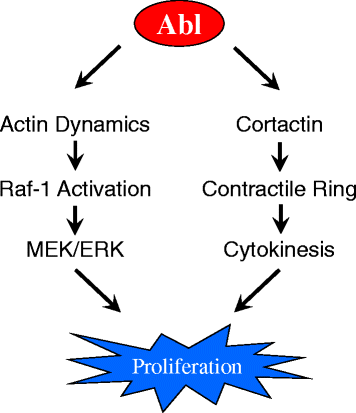Critical role of actin-associated proteins in smooth muscle contraction, cell proliferation, airway hyperresponsiveness and airway remodeling
- PMID: 26517982
- PMCID: PMC4628321
- DOI: 10.1186/s12931-015-0296-1
Critical role of actin-associated proteins in smooth muscle contraction, cell proliferation, airway hyperresponsiveness and airway remodeling
Abstract
Asthma is characterized by airway hyperresponsiveness and airway remodeling, which are largely attributed to increased airway smooth muscle contractility and cell proliferation. It is known that both chemical and mechanical stimulation regulates smooth muscle contraction. Recent studies suggest that contractile activation and mechanical stretch induce actin cytoskeletal remodeling in smooth muscle. However, the mechanisms that control actin cytoskeletal reorganization are not completely elucidated. This review summarizes our current understanding regarding how actin-associated proteins may regulate remodeling of the actin cytoskeleton in airway smooth muscle. In particular, there is accumulating evidence to suggest that Abelson tyrosine kinase (Abl) plays a critical role in regulating airway smooth muscle contraction and cell proliferation in vitro, and airway hyperresponsiveness and remodeling in vivo. These studies indicate that Abl may be a novel target for the development of new therapy to treat asthma.
Figures




References
Publication types
MeSH terms
Substances
Grants and funding
LinkOut - more resources
Full Text Sources
Other Literature Sources
Medical
Miscellaneous

